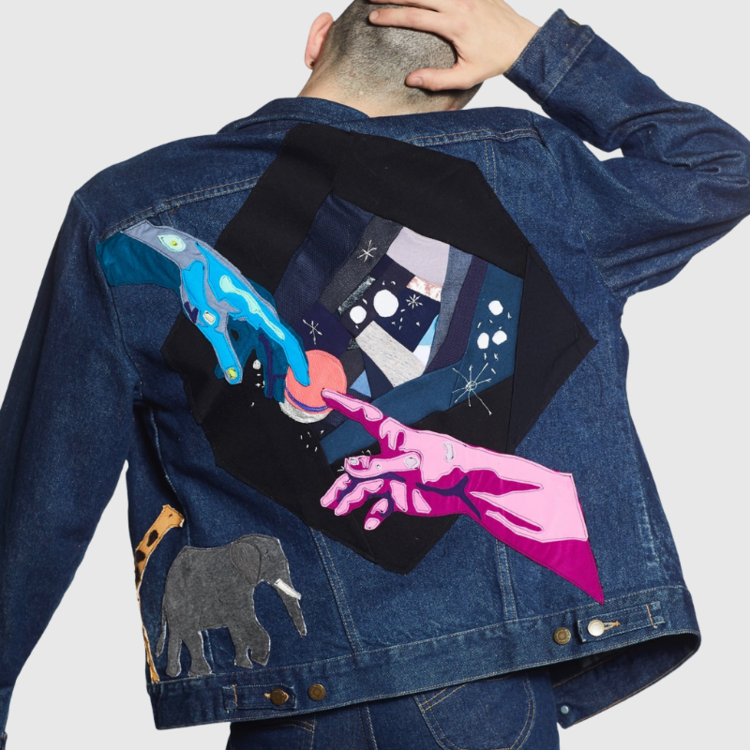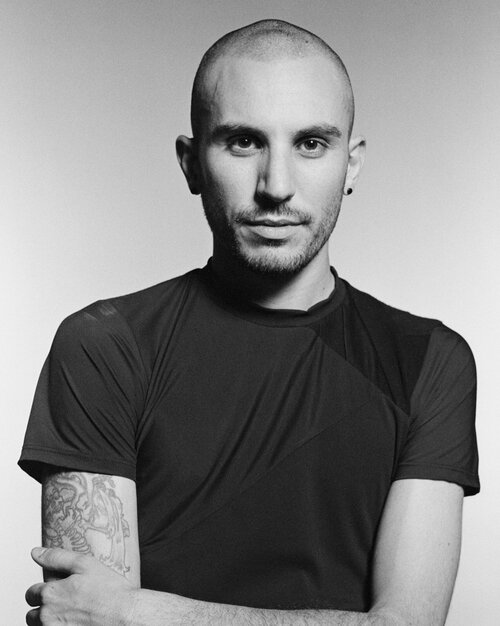The fashion industry is one of the industries facing the problem of environmental pollution due to overproduction. However, the style of reusing old clothing and stocks by young fashion designers is now attracting attention as a term “Trashion”, which is a coined word that combines trash and fashion. In France, Marine Serre, who won the Grand Prix in the LVMH Prize in 2017, is known as a leader of a new generation, also recently Virginie Ducatillon gets attention who launched the application Adapta in 2018. Based on her 10 years of experience in manufacturing leather products in a luxury brand workshop, she provides untouched leather raw materials stored in a warehouse to creators with an inexpensive prices under the concept of reuse of raw materials for clothing. She won the Paris Woolmark Prize in 2019.
Different background from hers, New York-based Emily Bode is also one of the leading trashion designers. Raised in Atlanta, Georgia, she got accustomed to antiques since her childhood by her mother’s influence. Her clothing and toys were handmade from used tablecloths and fabrics, and sewing was always her favorite hobby. After studying in Switzerland, she moved to New York where she graduated with a Bachelor’s degree in Menswear Design and Philosophy from Parsons College of Art and launched Bode in 2016. She joined New York Fashion Week as the first women’s designer for menswear the following year, and was awarded the CFDA Awards for emerging talent by the American Fashion Council in 2019. Handcrafted from New Delhi and New York artisans using antique textiles expresses emotions left behind in the past through her personal story and historical studies. She gives a lively breath to not only textiles, for example, woolly stuffed animals turn into slippers, and jackets are made out of vintage old milk-bottle caps.
Interview with her when she held a fashion show Fall/Winter 2020-21collection at Paris Men’s Fashion Week in January this year, “I thought it was normal to give life to handmade fabrics and make new ones” she said. Nowadays, the words upcycle and sustainable are more often used as a marketing method for a brand, yet in her case, she has a very pure feeling toward upcycle approach being habitualized as a part of her life. As a result, she rarely talks about environmental pollution and waste issues. The idea that manufacturing using old clothing is not special, is linked to minimize waste’s environmental impact.
All about “Zero Waste Daniel”
As well as Emily, American designer Daniel Silverstein is actively working on the problem of mass fabric disposal in the fashion industry. Although he joined the fashion industry as a knitwear designer for Victoria’s Secret, he was stunned by the huge amount of fabric discarded in the production process. “I found out that only 47% of the fabric was used and the rest 53% was discarded,” he said in New York Times interview. According to Fab Scrap, a company in New York City that provides pickup of unwanted fabric from local businesses and engaging the local creative community in reuse, 200,000 tons of fabrics are discarded that can be upcycled by New Yorkers annually, and in the United States it reaches 12.65 million tons annually. The total amount of waste by companies is about 40 times the amount by consumers, 85% of which is not reused but treated as garbage. Daniel felt that he was involved in the problem of waste disposal by putting himself in the fashion industry, so immediately left the company, and started Zero Waste Daniel in 2016. He asked the founder of Fab Scrap where to collect textile waste, and drove a heavy truck to pick up waste clothing from the large amount of garbage processed at the Army Terminal facility at Sunset Park. Casual clothing is sold through online platform such as T-shirts and sweaters, made from the textile waste by him gained popularity through word-of-mouth. He got the opportunity to exhibit and sell the products at the Climate Museum and Ace Hotel. His appearance at the American reality show also helped raise his name as well as the awareness of the problem of mass fabric disposal.
The movement at the front by young designers in their late twenties to thirties is likely to accelerate in order to actively work on the problems of waste and environmental pollution. In France, the issue of companies accused of greenwashing is put on the agenda, which is the process of conveying a false impression or providing misleading information about how a company’s products are more environmentally sound. Consumers are required to make the right choices in a mass consuming society by deepening their specialized knowledge, rather than relying on the words and images of companies.





